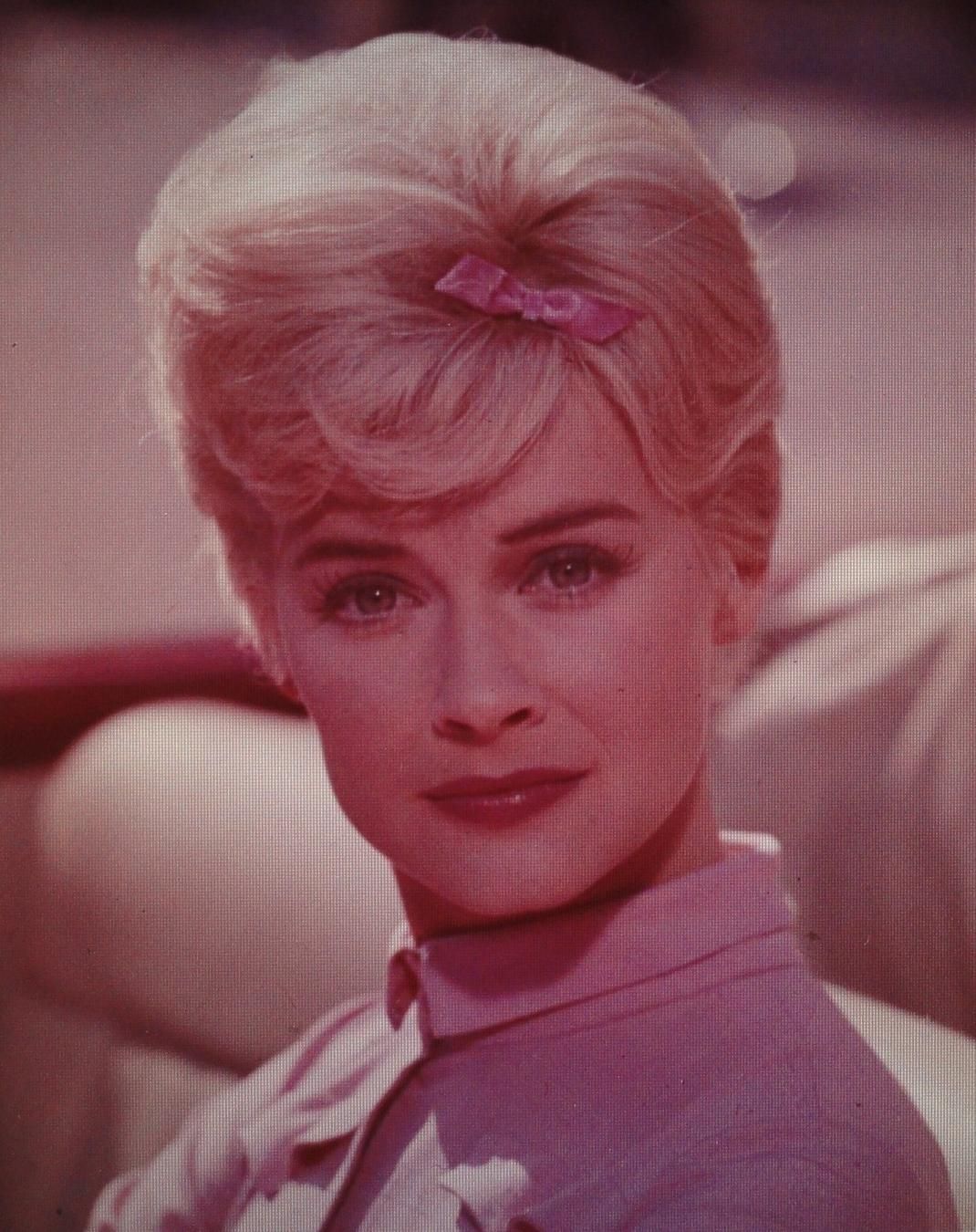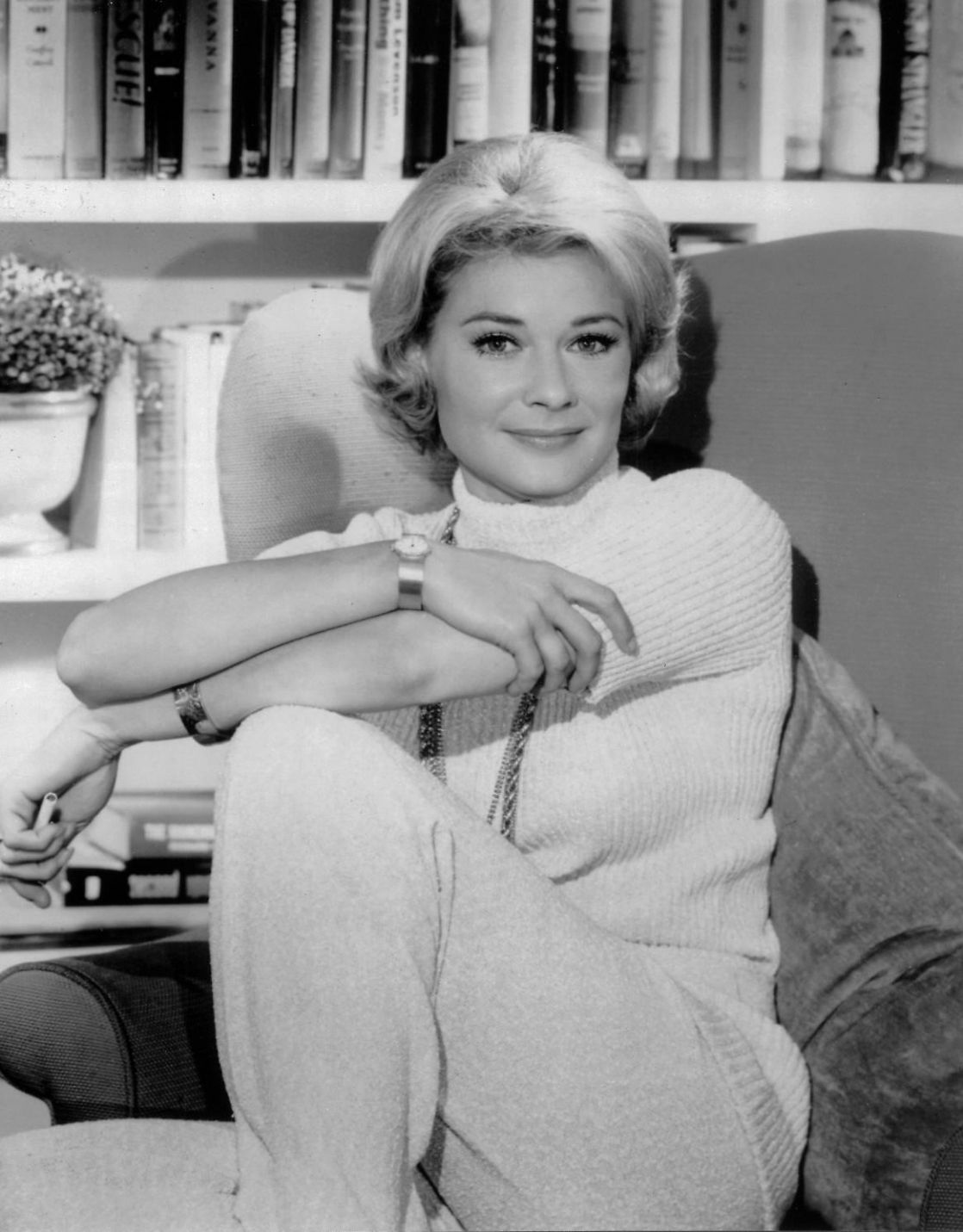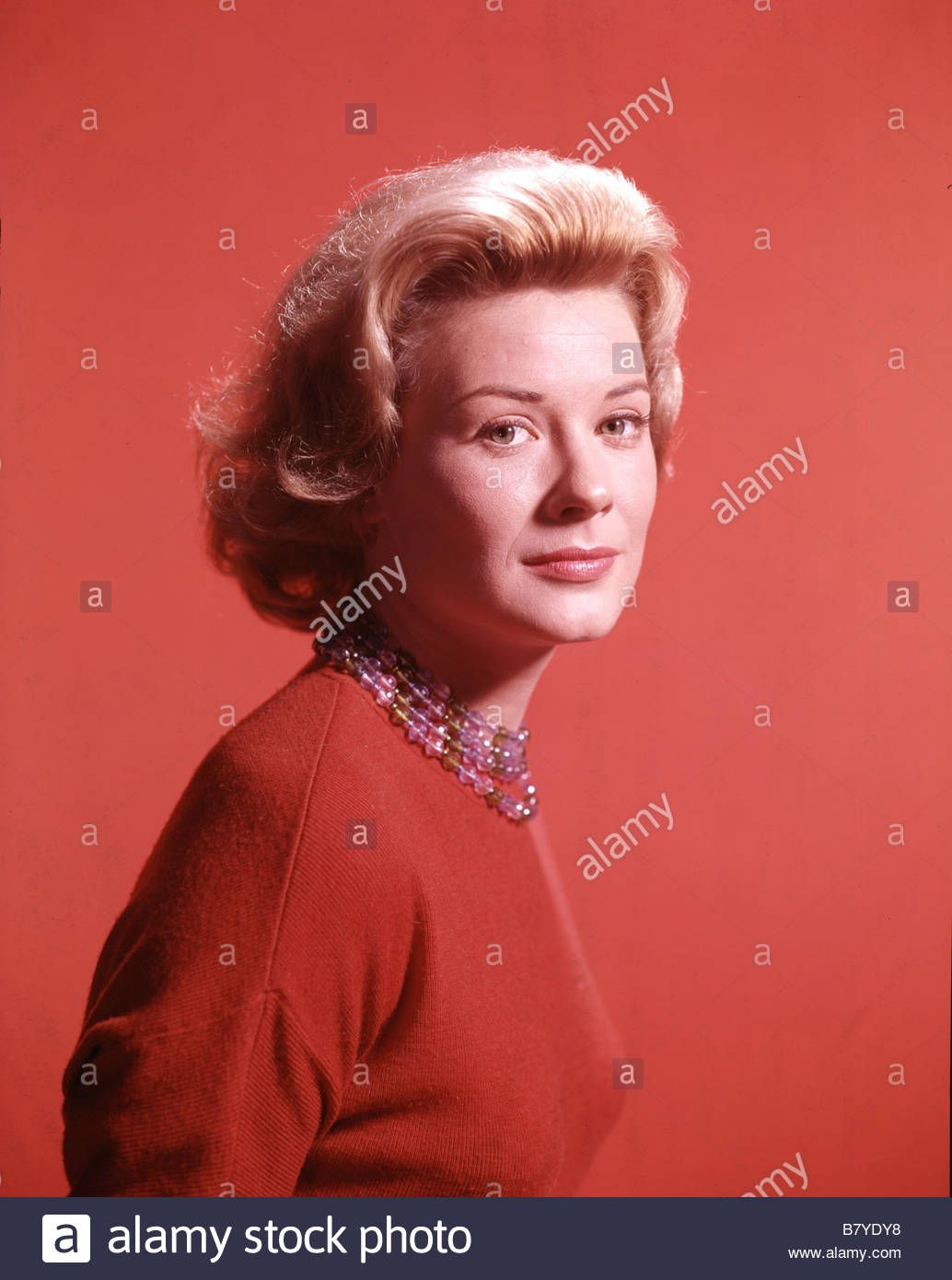Hope Lange: Unveiling The Enduring Legacy Of A Hollywood Icon
In the vast tapestry of Hollywood's golden age, certain stars shine with a unique luminescence, their talent and presence leaving an indelible mark on cinema and television. One such luminary was Hope Lange, an American actress whose career spanned decades, gracing both the silver screen and the intimate confines of the living room with her remarkable versatility and captivating charm. Her classic blonde beauty, coupled with a dignified reserve and a gentle voice, made her a standout figure in an era brimming with iconic personalities.
From her early beginnings on stage as a child to earning an Academy Award nomination and winning multiple Emmy Awards, Hope Lange carved out a distinguished path in the entertainment industry. Her ability to embody diverse characters, from the vulnerable Selena Cross in Peyton Place to the spirited Carolyn Muir in The Ghost & Mrs. Muir, showcased a depth that resonated deeply with audiences and critics alike. This article delves into the life and career of Hope Lange, exploring the defining moments that shaped her legacy and cemented her place as a true Hollywood icon.
Table of Contents
- Biography of Hope Lange
- Early Life and Formative Years
- The Ascent to Stardom: Breakthrough Roles
- Beyond the Spotlight: Personal Life and Relationships
- Hope Lange's Distinctive Acting Style and Legacy
- Awards and Nominations: A Testament to Talent
- Later Career and Final Years
- Hope Lange's Enduring Influence on Cinema and Television
Biography of Hope Lange
Hope Lange, born Hope Elise Ross Lange, was an American actress whose career spanned across films, stage, and television, leaving an indelible mark on each medium she touched. Renowned for her classic blonde beauty and an acting style characterized by dignified reserve and a gentle voice, Lange became a beloved figure in Hollywood. Her talent was recognized early and often, leading to significant critical acclaim, including an Academy Award nomination and multiple Emmy wins. She was not just a pretty face; her performances were imbued with a naturalism and emotional depth that made her characters incredibly relatable and memorable. From dramatic roles that showcased her vulnerability to comedic turns that highlighted her charm, Hope Lange demonstrated a remarkable range throughout her professional life.
| Category | Details |
|---|---|
| Full Name | Hope Elise Ross Lange |
| Born | November 28, 1933 |
| Died | December 19, 2003 (Age 70) |
| Birthplace | Redding Ridge (also West Redding), Connecticut, USA |
| Nationality | American |
| Occupation | Actress (Film, Stage, Television) |
| Spouse(s) | Don Murray (m. 1956; div. 1961), Robert Mulligan (m. 1964; div. 1971), Charles Hollerith, Jr. (m. 1986) |
| Children | Christopher Murray (son), Patricia Murray (daughter) |
| Notable Roles | Selena Cross in Peyton Place (1957), Carolyn Muir in The Ghost & Mrs. Muir (1968-1970), Emma in Bus Stop (1956) |
| Key Awards/Nominations | Academy Award Nomination (Best Supporting Actress), Golden Globe Nomination (Best Supporting Actress), 2x Primetime Emmy Awards (Outstanding Lead Actress) |
Early Life and Formative Years
Born on November 28, 1933, in Redding Ridge, Connecticut, Hope Elise Ross Lange was destined for a life in the performing arts. Her lineage already hinted at a creative inclination, with her mother, Minette Lange, being an actress, and her father, John Lange, a musician and composer. This artistic environment undoubtedly fostered her innate talents from a very young age. It was clear that the stage called to her early on, as she began performing at the tender age of nine. This early exposure to the world of performance instilled in her a foundational understanding of acting and stage presence that would serve her well throughout her illustrious career.
Hope Lange’s dedication to her craft was evident in her rigorous training. She delved into both drama and dance, studying under the tutelage of the legendary Martha Graham, a pioneer in modern dance. This comprehensive training provided her with a unique blend of physical grace and dramatic sensibility, setting her apart from many of her contemporaries. Before making her significant breakthrough in film, Lange honed her skills through various avenues. She ventured into modeling, which undoubtedly contributed to her poised on-screen presence and her reputation as one of the natural beauties of the 1960s. She also gained invaluable experience working in stock companies, performing in various theatrical productions, and even showcasing her dancing prowess on the popular Jackie Gleason shows. These early experiences were crucial in shaping her into the versatile and compelling actress that audiences would come to adore, demonstrating a work ethic and a commitment to artistry that defined her career.
The Ascent to Stardom: Breakthrough Roles
Hope Lange's transition from stage and modeling to the demanding world of Hollywood was swift and impactful, marked by a series of roles that quickly established her as a talent to watch. Her natural beauty and quiet intensity caught the eye of casting directors, leading to opportunities that would define her early career and set the stage for her lasting legacy. While her initial roles were notable, it was her work in two particular projects that truly launched her into the stratosphere of stardom, showcasing her remarkable dramatic capabilities and her ability to captivate audiences on both the big and small screens.
Peyton Place: A Defining Performance
In 1957, Hope Lange delivered what would become one of her most iconic and critically acclaimed performances in the film adaptation of Grace Metalious's controversial novel, Peyton Place. She portrayed Selena Cross, a young woman grappling with a dark secret and the oppressive social norms of a small, seemingly idyllic New England town. Lange's portrayal of Selena was a masterclass in subtlety and emotional depth. She brought a quiet strength and profound vulnerability to the character, conveying Selena's inner turmoil and resilience with remarkable authenticity. The role was complex and challenging, requiring Lange to navigate themes of abuse, social ostracization, and the struggle for survival in a restrictive environment.
Her performance as Selena Cross garnered widespread critical praise, earning her both a Golden Globe Award nomination for Best Supporting Actress and, most notably, an Academy Award nomination for Best Supporting Actress in 1958. This Oscar nomination was a significant milestone in her career, solidifying her status as a serious dramatic actress capable of delivering powerful and nuanced performances. The film itself was a massive commercial success and a cultural phenomenon, bringing the scandalous narrative of Peyton Place to a wider audience. For Hope Lange, it was a defining moment that showcased her ability to tackle challenging material and leave a lasting impression, proving that her talent extended far beyond her striking looks. Her work in this film remains a cornerstone of her cinematic legacy, often cited as one of the most compelling performances of her career.
The Ghost & Mrs. Muir: Television Triumph
While Peyton Place established Hope Lange as a film star, it was her leading role in the television series The Ghost & Mrs. Muir that cemented her place in the hearts of millions and demonstrated her incredible versatility across different mediums. Running from 1968 to 1970, the series saw Lange play Carolyn Muir, a widowed writer who moves into a charming seaside cottage only to discover it's haunted by the ghost of its former owner, Captain Daniel Gregg. This role allowed Lange to explore a lighter, more comedic side of her acting, while still retaining the dignified charm and gentle warmth that were her hallmarks.
The chemistry between Lange's Carolyn Muir and Edward Mulhare's Captain Gregg was enchanting, creating a beloved and unique dynamic that captivated audiences. Hope Lange's portrayal of Carolyn was a perfect blend of wit, intelligence, and endearing vulnerability. She navigated the comedic situations and the subtle romantic undertones with grace and impeccable timing, making Carolyn a character that viewers genuinely rooted for and connected with. Her performance was not only popular but also critically acclaimed, earning her two Primetime Emmy Awards for Outstanding Lead Actress in a Comedy Series in both 1969 and 1970. These consecutive Emmy wins underscored her mastery of the television format and her ability to carry a series with her compelling presence. The Ghost & Mrs. Muir remains one of her most cherished roles, showcasing her ability to transition seamlessly from intense dramatic film work to the more sustained, character-driven demands of a successful television series, further solidifying her enduring appeal and broad acting range.
Beyond the Spotlight: Personal Life and Relationships
While Hope Lange was celebrated for her on-screen performances, her personal life, like many public figures, also drew attention. She was married three times, with her first marriage to actor Don Murray being particularly notable, as it produced her two children, Christopher Murray and Patricia Murray. Lange and Murray met on the set of the 1956 film Bus Stop, where she played Emma, a role that also contributed to her early recognition. Their marriage in 1956 was a union of two rising stars, and for a time, they were a prominent Hollywood couple. However, the pressures of their demanding careers and public life ultimately led to their divorce in 1961.
Following her divorce from Don Murray, Hope Lange later married film director Robert Mulligan in 1964, a partnership that lasted until their divorce in 1971. Her final marriage was to Charles Hollerith, Jr., a film producer, in 1986. Throughout her life, despite the public nature of her profession, Lange maintained a degree of dignified reserve, reflecting the very qualities she often brought to her on-screen characters. She balanced her commitments as an actress with her role as a mother, raising her children while continuing to pursue her passion for acting. Her personal journey, marked by both professional triumphs and private challenges, added another layer to the public's understanding of the elegant and talented woman behind the captivating performances.
Hope Lange's Distinctive Acting Style and Legacy
Hope Lange possessed an acting style that was both unique and deeply resonant, setting her apart in the competitive landscape of Hollywood. Often described as one of the most natural beauties of the 1960s, her appeal extended far beyond her striking blonde hair and elegant features. It was her gentle voice, coupled with a personality to match, that truly defined her on-screen presence. This combination allowed her to portray characters with a quiet strength and an inherent grace, even when navigating intense dramatic situations.
Her performances were characterized by a dignified reserve, an ability to convey profound emotion without resorting to overt melodrama. Instead, Lange mastered the art of subtle expression – a nuanced glance, a slight shift in posture, or a carefully modulated tone of voice could communicate volumes. This understated approach made her characters incredibly believable and relatable, allowing audiences to connect with their inner struggles and triumphs on a deeper level. Whether she was portraying the traumatized Selena Cross or the spirited Carolyn Muir, Hope Lange brought an authenticity to her roles that made them memorable. She seamlessly moved between genres, demonstrating a versatility that allowed her to shine in both heart-wrenching dramas and lighthearted comedies. Her legacy is not just in the roles she played, but in the distinctive manner in which she played them, imbuing each character with a quiet intensity and an enduring human spirit that continues to captivate viewers today.
Awards and Nominations: A Testament to Talent
The career of Hope Lange was not only marked by memorable performances but also by significant recognition from her peers and the industry's most prestigious awarding bodies. These accolades serve as a clear testament to her exceptional talent and the profound impact she had on both film and television. Her nominations and wins underscore her versatility and the consistent quality of her work across different platforms.
Her breakthrough role as Selena Cross in the 1957 film Peyton Place earned her widespread critical acclaim and put her on the map as a serious dramatic actress. For this powerful portrayal, Hope Lange received two highly coveted nominations:
- Academy Award for Best Supporting Actress (1958): This nomination from the Motion Picture Academy is one of the highest honors in film, recognizing her outstanding contribution to the cinematic arts.
- Golden Globe Award for Best Supporting Actress (1958): The Hollywood Foreign Press Association also acknowledged her compelling performance in Peyton Place, further solidifying her critical acclaim.
While these nominations were significant achievements in film, Hope Lange's success extended triumphantly into television. Her role as Carolyn Muir in the beloved series The Ghost & Mrs. Muir showcased her comedic timing and ability to carry a show. This performance earned her two Primetime Emmy Awards, one of television's most prestigious honors:
- Primetime Emmy Award for Outstanding Lead Actress in a Comedy Series (1969): This award recognized her captivating and nuanced performance in the first season of the series.
- Primetime Emmy Award for Outstanding Lead Actress in a Comedy Series (1970): Lange's consistent excellence in the role led to her winning the Emmy for a second consecutive year, a rare feat that highlighted her enduring popularity and critical success on television.
These awards and nominations are not just footnotes in her biography; they are powerful affirmations of Hope Lange's skill, dedication, and the lasting impression she made on the entertainment world. They reflect a career built on genuine talent and a commitment to delivering performances that resonated deeply with audiences and critics alike.
Later Career and Final Years
Following her successes in the 1950s and 1960s, Hope Lange continued to work steadily in both film and television, albeit often in supporting roles or guest appearances. While the era of her major leading roles might have tapered off, her presence remained a welcome sight for audiences. She made appearances in various television movies and series, demonstrating her adaptability and continued commitment to her craft. Her later career saw her take on roles that showcased her maturity and continued elegance, allowing her to explore different facets of character portrayal.
Hope Lange's final years were spent away from the intense glare of the Hollywood spotlight, living a more private life. She passed away at the age of 70 on December 19, 2003, at a hospital in Santa Monica, California. Her passing was reported by The New York Times, acknowledging the loss of a talented actress who had graced screens for decades. While she may have stepped back from the most prominent roles, her contribution to the performing arts was undeniable and her work continued to be appreciated by fans of classic cinema and television. Her death marked the end of an era for many who had grown up watching her captivating performances, but her legacy lives on through the extensive body of work she left behind.
Hope Lange's Enduring Influence on Cinema and Television
The impact of Hope Lange on cinema and television extends far beyond her impressive list of credits and accolades. She represents a particular kind of Hollywood star: one whose appeal lay not just in overt glamour but in a deep, understated talent and a natural, relatable beauty. Her performances, especially as Selena Cross in Peyton Place and Carolyn Muir in The Ghost & Mrs. Muir, continue to resonate with new generations of viewers who discover her work through classic film channels and streaming services.
Lange's ability to embody complex characters with such authenticity set a high standard for her peers. She could convey vulnerability, strength, humor, and dignity, often within the same scene, making her characters feel incredibly real. Her gentle voice and personality, combined with her classic blonde beauty, made her an unforgettable presence. She was a bridge between the classic studio system and the evolving landscape of television, proving her versatility and enduring appeal across different formats. Her contributions helped shape the narrative and aesthetic of both mediums during a pivotal period in entertainment history. Hope Lange's legacy is that of an actress who, with quiet grace and profound talent, left an indelible mark, reminding us that true stardom is often found in the subtle power of genuine performance.
Conclusion
From her early days performing on stage at age nine to becoming an Academy Award-nominated and Emmy-winning actress, Hope Lange lived a life dedicated to the art of performance. Her career was a testament to her versatility, natural beauty, and the quiet strength she brought to every role. Whether captivating audiences with her dramatic intensity in films like Peyton Place or charming them with her wit and warmth in television series such as The Ghost & Mrs. Muir, Hope Lange consistently delivered performances that were both memorable and deeply human. Her dignified reserve and gentle demeanor, coupled with undeniable talent, solidified her status as a beloved Hollywood icon.
Her legacy endures not only through the films and television shows she graced but also in the hearts of those who admired her unique contribution to the performing arts. Hope Lange left behind a body of work that continues to inspire and entertain, reminding us of a golden era of storytelling. What are your favorite Hope Lange performances? Share your thoughts and memories in the comments below, and explore more about the fascinating lives of classic Hollywood stars on our site.

Pictures of Hope Lange

Pictures of Hope Lange

Pictures of Hope Lange